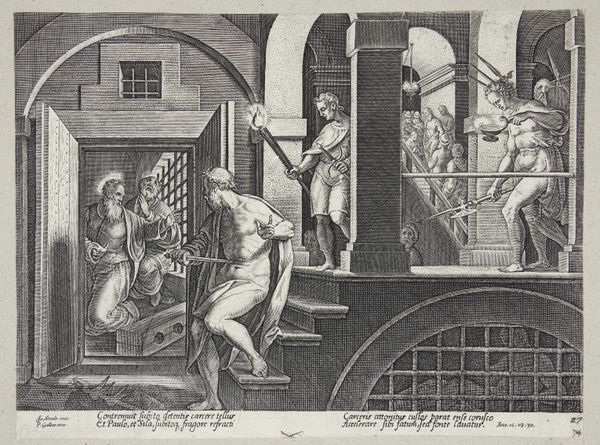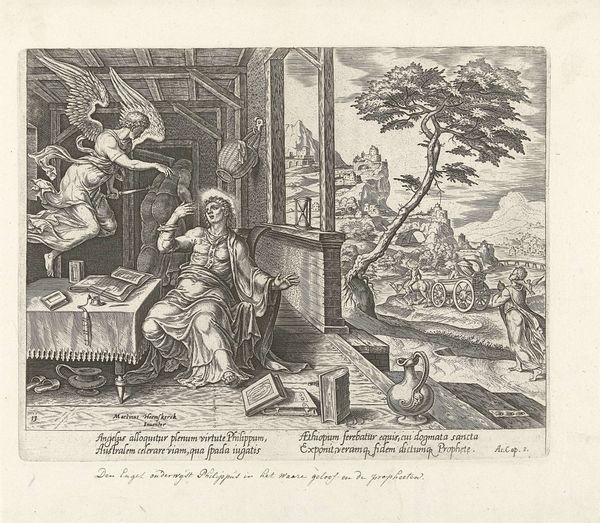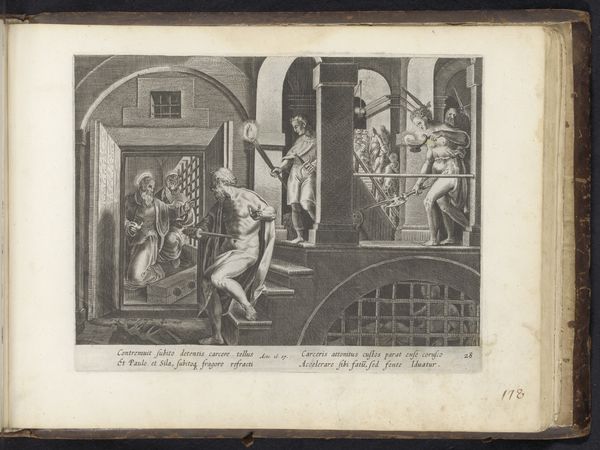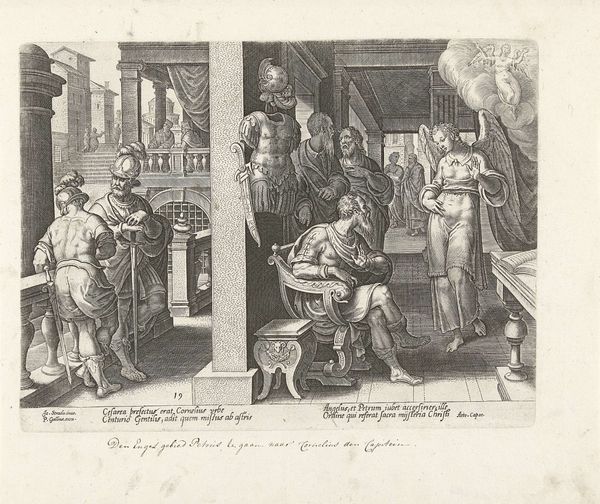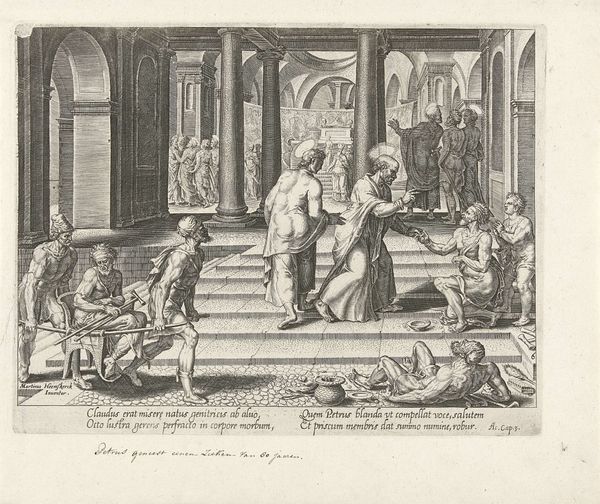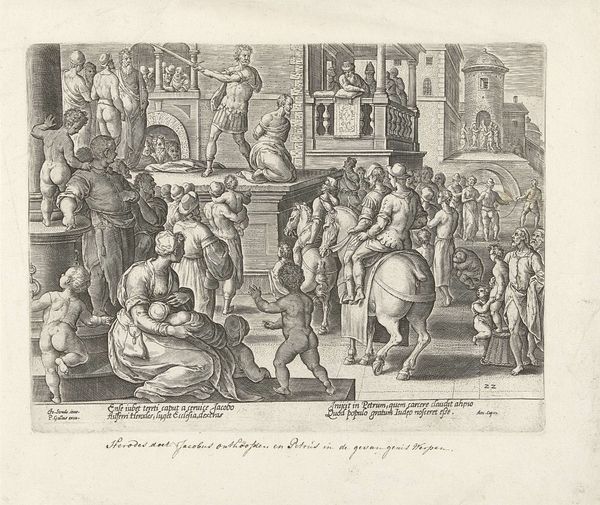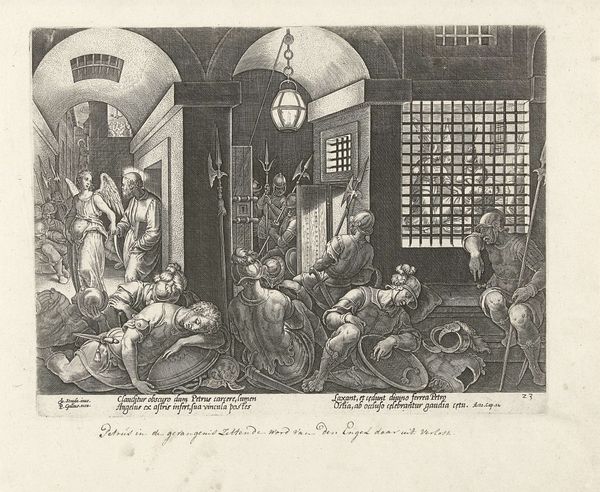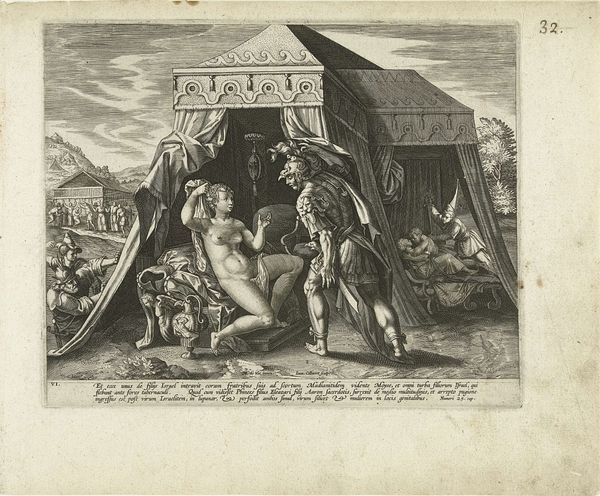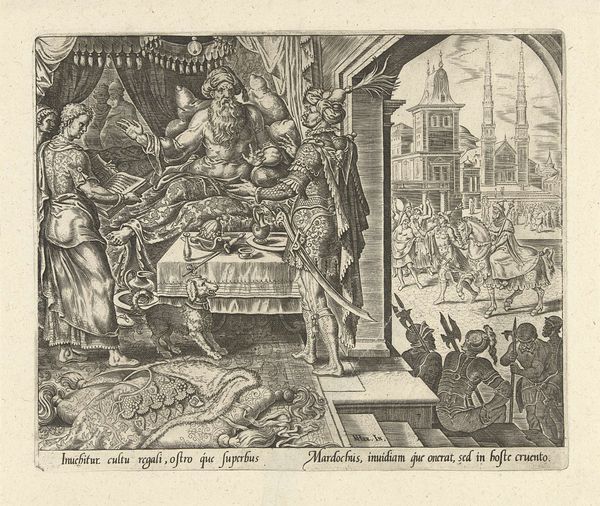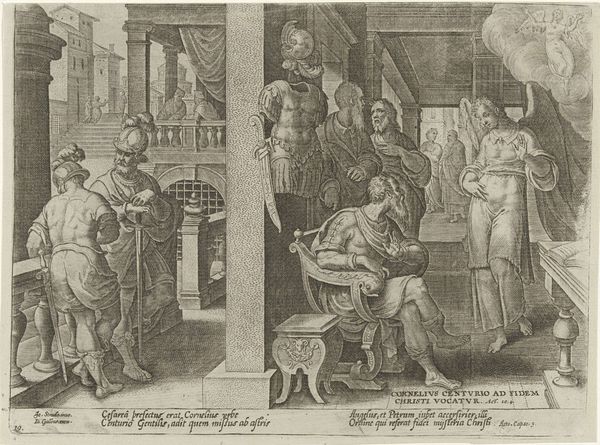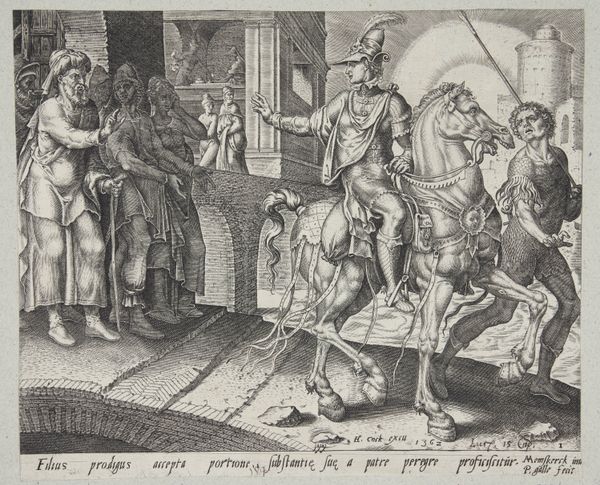
Dimensions: height 200 mm, width 257 mm
Copyright: Rijks Museum: Open Domain
Curator: Philips Galle's engraving, "Bekering van de gevangenbewaarder van Filippi," made in 1582, depicts a scene of dramatic conversion and divine intervention. It is quite remarkable, no? Editor: Indeed. It's quite busy, actually. The architecture is so linear and constructed, in stark contrast with the rather tumultuous subject matter! It does make you feel quite anxious somehow... like a house of cards that could topple at any moment. Curator: Precisely! The architectural rigidity acts as a compositional counterpoint, highlighting the emotional chaos of the depicted event. The use of line to create varied light and shadow amplifies the drama, wouldn't you agree? Editor: Oh, absolutely. Looking at this through a contemporary lens, I find it striking how the narrative reinforces hierarchical power structures. Here we have this appointed jailer about to take his life before being persuaded against it to essentially uphold the law that is incarcerating others. It becomes quite a sticky situation, morally. Curator: A complex layering of narrative. Indeed, Galle masterfully employs engraving techniques to capture intricate detail, thus drawing the viewer's eye across the multiple planes and levels. See how he uses hatching and cross-hatching to give volume and dimension to the figures... their musculature is incredible! Editor: While I appreciate the technical skill, I can't help but feel troubled by the implied endorsement of institutional power. This conversion seems less about spiritual awakening and more about maintaining social control. What is the engraving really communicating about privilege in its era, and potentially ours? Curator: Interesting! I concede it's always tempting to filter early modern art through our present-day lens, though that wasn't necessarily the immediate intention. I appreciate, though, that you brought a crucial layer to our analysis here today, particularly that of considering a historical artwork through an intersectional paradigm. Editor: And you, conversely, have heightened my appreciation for Galle's clever composition! Seeing the work solely as an object gives it weight beyond its time, even with its potential propagandist narrative undertones.
Comments
No comments
Be the first to comment and join the conversation on the ultimate creative platform.

